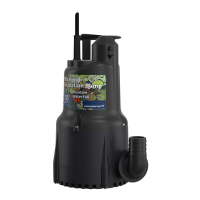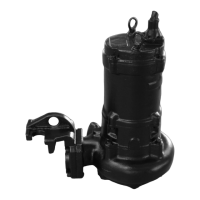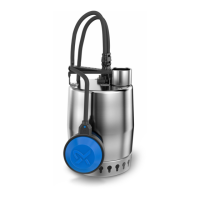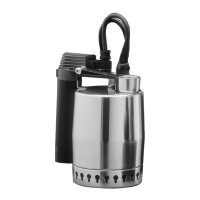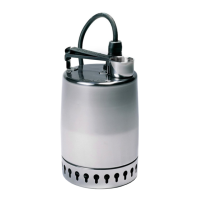27
English (US)
9. Fault finding the product
DANGER
Electric shock
Death or serious personal injury.
- Before starting any work on the product, make
sure that the power supply has been switched off
and that it cannot be accidentally switched on.
CAUTION
Toxic material
Minor or moderate personal injury.
- Wash down the pump before doing any work on it.
DANGER
Hot, caustic, flammable or toxic materials,
including vapors
Death or serious personal injury.
- Be extremely cautious when venting and/or
draining hazardous liquids.
Wear protective clothing when there are caustic,
corrosive, volatile, flammable, or hot liquids.
Do not breathe toxic vapors.
Do not allow sparks, open fire, or hot surfaces
near the equipment.
Fault Cause Remedy
1. The outlet pressure is too low. a) The speed of rotation is too low. Reestablish the correct speed and direction of
rotation.
b) The system pressure is lower than
anticipated.
Check the system curve.
c) There is air or gas in the pumped liquid. Remove the air from the pumped liquid.
d) The wear rings are worn. Replace the wear rings.
e) The impeller is damaged. Repair or replace the impeller.
f) The impeller diameter is too small. Replace the impeller with one of the correct
diameter.
g) The direction of rotation is wrong. Interchange two wires in the power supply.
h) The pump has lost its prime. Re-prime the pump.
i) There is insufficient NPSH. Restore required NPSH.
j) Passages are restricted. Clean the impeller and pump housing
passages.
k) Joints or the stuffing box are leaking. • Tighten the joints or the stuffing box gland.
• Replace the shaft sleeve.
• Replace the gaskets.
2. The inlet pressure is insufficient. a) The inlet line is drawing air. Tighten the connections.
b) The suction lift is too high or there is
insufficient NPSH.
Reduce the suction lift or restore required
NPSH.
c) Air or gas is trapped in the pumped liquid. Remove the trapped air or gas from liquid.
d) The strainer is clogged. Clean the strainer.
3. The noise level has increased. a) Poor alignment of the pump.
The inlet and outlet pipe clamps are loose.
• Reestablish proper alignment of the pump
and the motor.
• Support the inlet and outlet pipes.
• Make sure the vibration dampers, flexible
pipes and conduit connectors are installed
correctly.
b) Cracked foundation. Repair the foundation.
c) Worn ball bearings. • Replace the worn bearings.
• Renew the lubrication.
d) The motor is unbalanced. • Disconnect the motor and operate it alone.
• Remove large pieces of debris, such as
wood or rags from the pump.
• Clean out the pump, if necessary.
e) Hydraulic resonance. • Alter the resonant pipes.
• Change the pump speed.
• Insert a pulsation damper on the pump or the
pipes.
• Insert a flow straightener.
